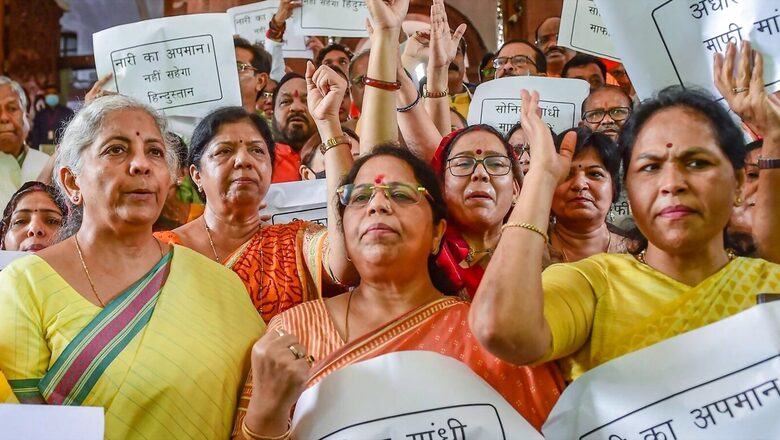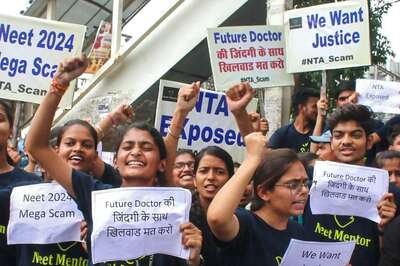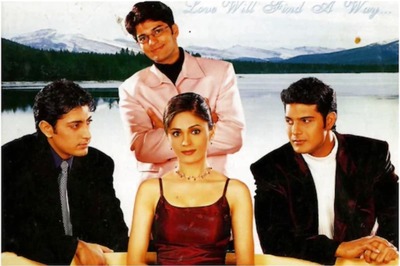
views
This time, it was no government policy or welfare scheme that led to a heated war of words in Parliament. The Monsoon Session was struck by thunder on Thursday when the BJP went all out against Congress MP Adhir Ranjan Chowdhury for referring to President Droupadi Murmu as “Rashtrapatni". Chowdhury’s defence that his usage of the word was a mere slip of the tongue failed to cool the tempers of the BJP. Led by ministers Smriti Irani in Lok Sabha and Nirmala Sitharaman in Rajya Sabha, the party sought an apology from both Chowdhury and Congress president Sonia Gandhi. Irani accused the Congress of being anti-Adivasi and anti-women for the alleged derogatory reference, and accused the party of “humiliating" the supreme commander of the armed forces. The issue soon snowballed as both sides accused each other of breaking parliamentary decorum.
While there is no denying that Chowdhury’s utterances may have lowered the dignity of the President’s post, it has once again ignited the debate over choosing gender-neutral terms for constitutional posts.
With more drama expected in the House today, News18 takes a look at the controversy and precedents:
The history
When the Constituent Assembly was discussing in December 1948 how the President should be addressed, HV Kamath objected to a modification to the original draft that Jawaharlal Nehru had presented on July 4, 1947. He asked why (then) Article 41 — “The Head of the Federation shall be the President (Rashtrapati)" — had been changed to “There shall be a President of India."
Kamath had then asked: “I want to know from Dr (BR) Ambedkar why this word ‘Rashtrapati’ has been deleted from the article which appears in the Draft Constitution today. Is it because, Sir, that we have now developed — latterly developed, cultivated a dislike — a new-fangled dislike of some Indian or Hindi words and try to avoid them as far as possible in the English Draft of the Constitution?"
To this, Ambedkar responded that the change was because the committee that was preparing the draft Constitution in English had left it to those who were preparing the draft in Hindi and Hindustani to choose the corresponding word. While the draft in Hindustani used “President", the one in Hindi used “Pradhan". “And I am just now informed that in the Urdu Draft, the word used is’"Sardar"," Ambedkar told the Constituent Assembly.
During the debate, there were suggestions, including ‘Sardar’, ‘Pradhan’, ‘Neta’, ‘Karandhar’ and ‘Chief Executive and Head of the State’, but the Constituent Assembly settled on the term ‘Rashtrapati’ for India’s top constitutional post.
What about when Pratibha Patil was President?
The issue around the terminology gained some currency when the UPA decided to field Pratibha Patil, a former Governor of Rajasthan, in the 2007 presidential election. It was the first time that India would have a woman President and among the suggestions made was “Rashtrapatni", though it was never taken seriously.
Constitutional experts argued that the word Rashtrapati, which was finalised after discussions in the Constituent Assembly, should not be changed only because India had a woman President. They noted that the word has no gender connotations; it’s simply that ‘President’ translates into Hindi as ‘Rashtrapati’.
In a rather gender-neutral suggestion, Shiv Sena supremo Bal Thackeray had suggested using the word ‘Rashtradhyaksh’. In a statement that appeared in his party mouthpiece Saamana in June 2007, he said: “Ever since Pratibhatai’s name has been announced as the Presidential nominee, there is a debate about what she should be referred to when she assumes charge at Rashtrapati Bhavan. I feel that there is no need for a ‘Pati’ or ‘Patni’, Pratibhatai should be called Rashtradhyaksh."
However, throughout her tenure, Patil was referred to as Rashtrapati.
What are the latest debates?
Some women rights activists on Thursday said over the years some words and phrases have been replaced with more gender-neutral terms in various spheres. Spokesman has made way for spokesperson, chairman for chairperson and in cricket batsman for batter.
Yogita Bhayana, a women’s rights activist who heads People Against Rape in India, said like chairperson, president is also gender neutral. Translated into Hindi, the word president gets a different overtone but the relevance is the same, she said. “But Chowdhury’s comments were very insensitive. I think he wanted to be very specific about gender because he wanted to make a patriarchal statement. We never judged Pratibha Patil (former president) like that. “One can think about going gender-neutral while referring to the president, but he (Chowdhury) made the statement for a different reason altogether. However, there must be a suitable term for the post in the future," Bhayana told PTI.
Social activist and human rights campaigner Shabnam Hashmi said there should be a gender-neutral term for president like that of chairperson. “Mantri also doesn’t reflect gender but the moment you say ‘pati’ and ‘patni’ there are other connotations too," she said.
However, some activists believe that since president is a constitutional post it is already gender neutral. Ranjana Kumari, a social activist and the director of the Centre for Social Research, said whether male or female, the president has similar power, and authority and it is a constitutional position. “So I don’t understand why people are confused. But if at all the government wants a gender-neutral term they can call it ‘rashtrapradhan’. But I don’t see why we should look at rashtrapati as a gender-loaded term because ‘pati’ is not really anyone’s husband here so I don’t see the reason for controversy."
Read all the Latest News and Breaking News here



















Comments
0 comment